European Council
 Emblem | |
| Formation |
1961 (informally) 2009 (formally) |
|---|---|
| Type | EU collective presidency |
| Location |
|
| Donald Tusk | |
| Website | European Council |
| European Union |
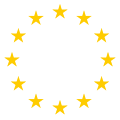 This article is part of a series on the |
Policies and issues
|
The European Council (French: Conseil européen), charged with defining the EU's overall political direction and priorities, is the institution of the European Union (EU) that comprises the heads of state or government of the member states, along with the President of the European Council and the President of the European Commission. The High Representative of the Union for Foreign Affairs and Security Policy also takes part in its meetings.[1] Established as an informal summit in 1975, the European Council was formalised as an institution in 2009 upon the entry into force of the Treaty of Lisbon. Its current President is Donald Tusk.
Scope
While the European Council has no formal legislative power, it is a strategic (and crisis-solving) body that provides the union with general political directions and priorities, and acts as a collective presidency. The European Commission remains the sole initiator of legislation, but the European Council is able to provide an impetus to guide legislative policy.[2][3]
The meetings of the European Council, still commonly referred to as EU summits, are chaired by its president and take place at least twice every six months;[1] usually in the Justus Lipsius building, the headquarters of the Council of the European Union in Brussels.[4][5] Decisions of the European Council are taken by consensus, except where the Treaties provide otherwise.[6]
History

The first summits of EU heads of state or government were held in February and July 1961 (in Paris and Bonn respectively). They were informal summits of the leaders of the European Community and were started due to then-French President Charles de Gaulle's resentment at the domination of supranational institutions (e.g. the European Commission) over the integration process, but petered out. The first influential summit held, after the departure of De Gaulle, was The Hague summit of 1969, which reached an agreement on the admittance of the United Kingdom into the Community and initiated foreign policy cooperation (the European Political Cooperation) taking integration beyond economics.[1][7]
The summits were only formalised in the period between 1974 and 1988. At the December summit in Paris in 1974, following a proposal from then-French president Valéry Giscard d'Estaing, it was agreed that more high level, political input was needed following the "empty chair crisis" and economic problems.[8] The inaugural European Council, as it became known, was held in Dublin on 10 and 11 March 1975 during Ireland's first Presidency of the Council of Ministers. In 1987, it was included in the treaties for the first time (the Single European Act) and had a defined role for the first time in the Maastricht Treaty. At first only a minimum of two meetings per year were required, which resulted in an average of three meetings per year being held for the 1975-1995 period. Since 1996, the number of meetings were required to be minimum four per year. For the latest 2008-2014 period, this minimum was well exceeded, by an average of seven meetings being held per year. The seat of the Council was formalised in 2002, basing it in Brussels. Three types of European Councils exist: Informal, Scheduled and Extraordinary. While the informal meetings are also scheduled 1½ year in advance, they differ from the scheduled ordinary meetings by not ending with official Council conclusions, as they instead end by more broad political Statements on some cherry picked policy matters. The extraordinary meetings always end with official Council conclusions - but differs from the scheduled meetings by not being scheduled more than a year in advance, as for example in 2001 when the European Council gathered to lead the European Union's response to the 11 September attacks.[1][7]
_edited.jpg)
Some meetings of the European Council are seen by some as turning points in the history of the European Union. For example:[1]
- 1969, The Hague: Foreign policy and enlargement.
- 1974, Paris: Creation of the Council.
- 1985, Milan: Initiate IGC leading to the Single European Act.
- 1991, Maastricht: Agreement on the Maastricht Treaty.
- 1992, Edinburgh: Agreement (by treaty provision) to retain at Strasbourg the plenary seat of the European Parliament.
- 1993, Copenhagen: Leading to the definition of the Copenhagen Criteria.
- 1997, Amsterdam: Agreement on the Amsterdam Treaty.
- 1998, Brussels: Selected member states to adopt the euro.
- 1999; Cologne: Declaration on military forces.[9]
- 1999, Tampere: Institutional reform
- 2000, Lisbon: Lisbon Strategy
- 2002, Copenhagen: Agreement for May 2004 enlargement.
- 2007, Lisbon: Agreement on the Lisbon Treaty.
- 2009, Brussels: Appointment of first president and merged High Representative.
- 2010, European Financial Stability Facility
As such, the European Council had already existed before it gained the status as an institution of the European Union with the entering into force of the Treaty of Lisbon. Indeed, Article 214(2) of the Treaty establishing the European Community provided (before it was amended by the Treaty of Lisbon) that ‘the Council, meeting in the composition of Heads of State or Government and acting by a qualified majority, shall nominate the person it intends to appoint as President of the Commission’ (emphasis added); this may be seen as an early codification of the European Council in the Treaties. In the event, Article 15 of the Treaty on European Union (amended by the Treaty of Lisbon) officially introduces the term European Council as a substitute for the phrase "Council [of the European Union] meeting in the composition of the Heads of State or Government", which was previously sometimes used in the treaties to refer to this body.[10]
The Treaty of Lisbon made the European Council a formal institution distinct from the (ordinary) Council of the EU, and created the present longer term and full-time presidency. As an outgrowth of the Council of the EU, the European Council had previously followed the same Presidency, rotating between each member state. While the Council of the EU retains that system, the European Council established, with no change in powers, a system of appointing an individual (without them being a national leader) for a two-and-a-half-year term - which can be renewed for the same person only once.[11] Following the ratification of the treaty in December 2009, the European Council elected the then-Prime Minister of Belgium Herman Van Rompuy as its first permanent president (resigning from Belgian Prime Minister).[12]
Powers and functions
The European Council is an official institution of the EU, mentioned by the Lisbon Treaty as a body which "shall provide the Union with the necessary impetus for its development". Essentially it defines the EU's policy agenda and has thus been considered to be the motor of European integration.[1] Beyond the need to provide "impetus", the Council has developed further roles: to "settle issues outstanding from discussions at a lower level", to lead in foreign policy — acting externally as a "collective Head of State", "formal ratification of important documents" and "involvement in the negotiation of the treaty changes".[5][7]
Since the institution is composed of national leaders, it gathers the executive power of the member states and has thus a great influence in high-profile policy areas as for example foreign policy. It also exercises powers of appointment, such as appointment of its own President, the High Representative of the Union for Foreign Affairs and Security Policy, and the President of the European Central Bank. It proposes, to the European Parliament, a candidate for President of the European Commission. Moreover, the European Council influences police and justice planning, the composition of the Commission, matters relating to the organisation of the rotating Council presidency, the suspension of membership rights, and changing the voting systems through the Passerelle Clause. Although the European Council has no direct legislative power, under the "emergency brake" procedure, a state outvoted in the Council of Ministers may refer contentious legislation to the European Council. However, the state may still be outvoted in the European Council.[11][13][14] Hence with powers over the supranational executive of the EU, in addition to its other powers, the European Council has been described by some as the Union's "supreme political authority".[5][7][11][15]
Composition
The European Council consists of the heads of state or government of the member states, alongside its own President and the Commission President (both non-voting). The meetings used to be regularly attended by the national foreign minister as well, and the Commission President likewise accompanied by another member of the Commission. However, since the Treaty of Lisbon, this has been discontinued, as the size of the body had become somewhat large following successive accessions of new Member States to the Union.[1][5]
Meetings can also include other invitees, such as the President of the European Central Bank, as required. The Secretary-General of the Council attends, and is responsible for organisational matters, including minutes. The President of the European Parliament also attends to give an opening speech outlining the European Parliament's position before talks begin.[1][5]
Additionally, the negotiations involve a large number of other people working behind the scenes. Most of those people, however, are not allowed to the conference room, except for two delegates per state to relay messages. At the push of a button members can also call for advice from a Permanent Representative via the "Antici Group" in an adjacent room. The group is composed of diplomats and assistants who convey information and requests. Interpreters are also required for meetings as members are permitted to speak in their own languages.[1]

As the composition is not precisely defined, some states which have a considerable division of executive power can find it difficult to decide who should attend the meetings. While an MEP, Alexander Stubb argued that there was no need for the President of Finland to attend Council meetings with or instead of the Prime Minister of Finland (who was head of European foreign policy).[16] In 2008, having become Finnish Foreign Minister, Stubb was forced out of the Finnish delegation to the emergency council meeting on the Georgian crisis because the President wanted to attend the high-profile summit as well as the Prime Minister (only two people from each country could attend the meetings). This was despite Stubb being head of the Organisation for Security and Co-operation in Europe at the time which was heavily involved in the crisis. Problems also occurred in Poland where the President of Poland and the Prime Minister of Poland were of different parties and had a different foreign policy response to the crisis.[17] A similar situation arose in Romania between President Traian Băsescu and Prime Minister Călin Popescu-Tăriceanu in 2007–2008 and again in 2012 with Prime Minister Victor Ponta, who both opposed the president.
Eurozone summits
A number of ad hoc meetings of Heads of State or Government of the Euro area countries were held in 2010 and 2011 to discuss the Sovereign Debt crisis. It was agreed in October 2011 that they should meet regularly twice a year (with extra meetings if needed). This will normally be at the end of a European Council meeting and according to the same format (chaired by the President of the European Council and including the President of the Commission), but usually restricted to the (currently 19) Heads of State or Government of countries whose currency is the euro.
President
The President of the European Council is elected by the European Council by a qualified majority for a once-renewable term of two and a half years.[18] The President must report to the European Parliament after each European Council meeting.[5][15]
The post was created by the Treaty of Lisbon and was subject to a debate over its exact role. Prior to Lisbon, the Presidency rotated in accordance with the Presidency of the Council of the European Union.[5][15] The role of that President-in-Office was in no sense (other than protocol) equivalent to an office of a head of state, merely a primus inter pares (first among equals) role among other European heads of government. The President-in-Office was primarily responsible for preparing and chairing the Council meetings, and had no executive powers other than the task of representing the Union externally. Now the leader of the Council Presidency country can still act as president when the permanent president is absent.
Members
European People's Party (8 + 2 non-voting from the EU institutions) Party of European Socialists (8) Alliance of Liberals and Democrats for Europe (7) Alliance of European Conservatives and Reformists (2) Party of the European Left (1) Independent (2)
- Notes
- ↑ Used in the calculation of the qualified majority voting. The share of the total population is based on the decision of the Council of the European Union on Member States populations for 2016
- ↑ The Irish Prime Minister is commonly referred to as the Taoiseach in both Irish and English. See: Article 28.5.1° of the Constitution of Ireland.
- ↑ Considered an EPP member according to it's official webpage.
- ↑ Previously leader of the National Liberal Party (PNL) and supported by them during his election campaign, Iohannis is officially unaffiliated during his presidency according to the Constitution.
Political parties
.png)
Does not account for coalitions. Key to colours is as follows;
Almost all members of the European Council are members of a political party at national level, and most of these are members of a European-level political party. These frequently hold pre-meetings of their European Council members, prior to its meetings. However, the European Council is composed to represent the EU's states rather than political parties and decisions are generally made on these lines, though ideological alignment can colour their political agreements and their choice of appointments (such as their president).
The table below outlines the number of leaders affiliated to each party and their total voting weight. The map to the right indicates the alignment of each individual country.
| Party | Number of seats | Share of population | |
|---|---|---|---|
| European People's Party | 8 | 34.22% | |
| Party of European Socialists | 8 | 33.95% | |
| Alliance of Liberals and Democrats for Europe Party | 7 | 8.54% | |
| Alliance of European Conservatives and Reformists | 2 | 20.19% | |
| Party of the European Left | 1 | 2.13% | |
| Independent | 2 | 0.96% | |
| Total | 28 | 100% | |
Seat and meetings
Meetings of the European Council usually take place four times a year in Brussels. Meetings traditionally last for two days, sometimes even longer when contentious issues were on the agenda.[1] However, former President Van Rompuy preferred to keep the summit to a single day.[19] Until 2002, the venue of the council meeting rotated between member states, as its location was decided by the country holding the rotating presidency. However, the 22nd declaration attached to the Treaty of Nice stated that; "As from 2002, one European Council meeting per Presidency will be held in Brussels. When the Union comprises 18 members, all European Council meetings will be held in Brussels."[20]
Between 2002 and 2004, half the councils were held in Brussels and, after the 2004 enlargement, all were. The European Council uses the same building as the Council of the European Union, i.e., the Justus Lipsius building. However, some extraordinary councils have taken place in the member state holding the Presidency, e.g., 2003 in Rome or 2005 in Hampton Court Palace. A new building (the "Europa building") is currently being built at the northern end of the adjacent historical Résidence Palace complex for use as a purpose built summit building by the European Council and the Council. It had been due to be completed in 2013, but various delays have made late 2016 the opening date.[7][21]
The choice of a single seat was due to a number of factors, mostly logistical (organising the meetings became ever more onerous with the enlargement of the EU, especially for smaller countries) and security (the experience of the Belgian police in dealing with protesters (a protester in Gothenburg was shot by police)) as well as Brussels having fixed facilities for the Council and journalists at every meeting. Having a permanent seat in Brussels also emphasised that the European Council is an EU institution rather than a summit of sovereign States in the manner of the G20. Some have argued it is the de facto EU government,[7] while others underline that it is the Commission that is the EU's day-to-day government and the European Council can best be compared to a collective head of state.
In 2007, the new situation for locating meetings became a source of contention with the Portuguese government wanting to sign the Lisbon Treaty in Lisbon, Portugal. The Belgian government, however, was keen not to set a precedent and insisted that the regular end of year summit took place in Brussels as usual. This meant that after the signing, photo suit, and formal dinner, the attendees of the summit were transferred from Lisbon to Brussels.[22] Mirrored with the "travelling circus" of the European Parliament, this garnered protests from environmental groups describing the hypocrisy of demanding lower carbon emissions while flying across Europe for the same summit for political reasons.[23]
There are no current plans to hold meetings outside of Brussels, except for force majeure (for instance a strike by air traffic controllers nearly caused the January 2012 informal meeting to be switched to Luxembourg).
President's cabinet
Although the European Council is, under the terms of the Lisbon treaty, a separate institution of the EU, it does not have its own administration. The administrative support for both the European Council and its president is provided by the General Secretariat of the Council of the European Union. The president does have, however, his own private office (cabinet) of close advisers. Van Rompuy chose as his chief of staff (chef de cabinet) Baron Frans van Daele, formerly Belgian ambassador to, variously, the USA, the UN, the EU and NATO and chief of staff of several Belgian foreign ministers. Also in his team are the former UK Labour MEP Richard Corbett, former Hungarian Ambassador to NATO Zoltán Martinusz, former head of the EU's economic & financial committee Odile Renaud-Basso, and Van Rompuy's long standing press officer Dirk De Backer.
See also
References
- 1 2 3 4 5 6 7 8 9 10 "Consolidated versions of the Treaty on European Union and the Treaty on the functioning of the European Union" (PDF).
- ↑ Art. 13 et seq of the Treaty on European Union
- ↑ Gilbert, Mark (2003). Surpassing Realism – The Politics of European Integration since 1945 (page 219: Making Sense of Maastricht). Rowman & Littlefield. Retrieved 23 August 2011.
- ↑ "Council of the European Union". Council of the European Union. Retrieved 12 July 2007.
- 1 2 3 4 5 6 7 "EUROPA – The European Council: Presidency Conclusions". European Commission. Retrieved 11 December 2011.
- ↑ Art. 15(4) of the Treaty on European Union
- 1 2 3 4 5 6 Stark, Christine. "Evolution of the European Council: The implications of a permanent seat" (PDF). Dragoman.org. Archived from the original (PDF) on 9 July 2007. Retrieved 12 July 2007.
- ↑ On the economic problems, see Imbrogno, Anthony (2016). "The Founding of the European Council: economic reform and the mechanism of continuous negotiation". Journal of European Integration 38 no.6, pp.719-736. http://www.tandfonline.com/doi/full/10.1080/07036337.2016.1188925
- ↑ "EU Security Policy & the role of the European Commission". European Commission. Archived from the original on 22 October 2007. Retrieved 22 August 2007.
- ↑ Wikisource: Article 2, Treaty of Lisbon
- 1 2 3 "The Union's institutions: The European Council". Europa (web portal). 21 February 2001. Retrieved 12 July 2007.
- ↑ "BBC News — Belgian PM Van Rompuy is named as new EU president". 20 November 2009. Retrieved 20 November 2009.
- ↑ Peers, Steve (2 August 2007). "EU Reform Treaty Analysis no. 2.2: Foreign policy provisions of the revised text of the Treaty on the European Union (TEU)" (PDF). Statewatch. Retrieved 26 September 2007.
- ↑ Peers, Steve (2 August 2007). "EU Reform Treaty analysis 1: JHA provisions" (PDF). Statewatch. Retrieved 26 September 2007.
- 1 2 3 "How does the EU work". Europa (web portal). Retrieved 12 July 2007.
- ↑ "Finnish Conservatives name Stubb foreign minister". new Room Finland. 1 April 2008. Retrieved 1 April 2008.
- ↑ Phillips, Leigh (29 August 2008). "Spats over who gets to go to EU summit break out in Poland, Finland". EU Observer. Retrieved 1 September 2008.
- ↑ "European Council: The President's role". Retrieved 21 March 2015.
The President the European Council is elected by the European Council by a qualified majority. He is elected for a 2.5 year term, which is renewable once.
- ↑ Banks, Martin (18 June 2010) Cameron gives 'new style' EU summits thumbs-up, Parliament Magazine
- ↑ "Treaty of Nice" (PDF). Europa (web portal). 21 February 2001. Retrieved 12 July 2007.
- ↑ "Reconstruction of "Residence Palacel". UIA Architectes. 26 September 2005. Retrieved 12 July 2007.
- ↑ Mahony, Honor (13 December 2007). "EU leaders to sign up to new treaty". EU Observer. Retrieved 22 November 2010.
- ↑ ley Berry, Peter Sain (1 November 2007). "Comment: Travelling circuses are not worth the carbon". EU Observer. Retrieved 1 November 2007.
External links
- Official website
- Archive of European Integration – Summit Guide
- European Council Collection of documents - CVCE
- Reflection Group established by the European Council

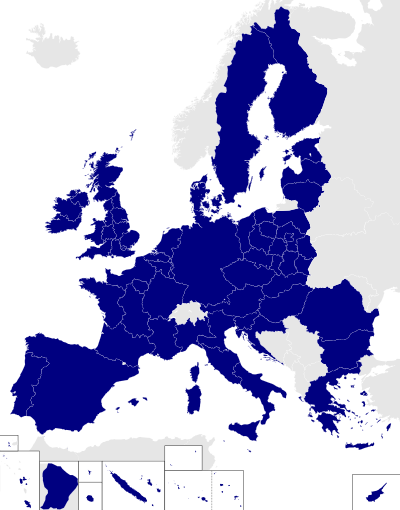
.jpg)
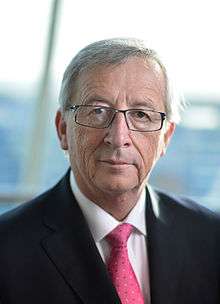
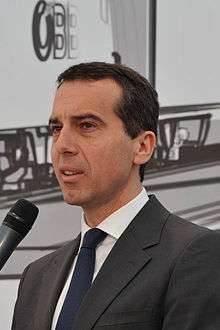
.jpg)

.jpg)
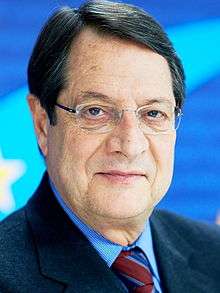
.jpg)
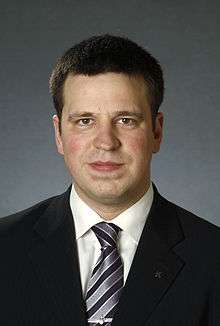
-crop.jpg)
_cropped.jpg)
.jpg)
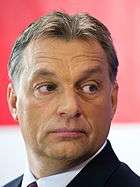
.jpg)





.jpg)
.jpg)

.jpg)

.jpg)
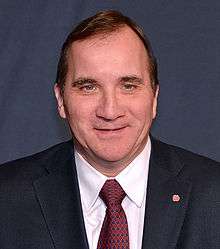
.jpg)